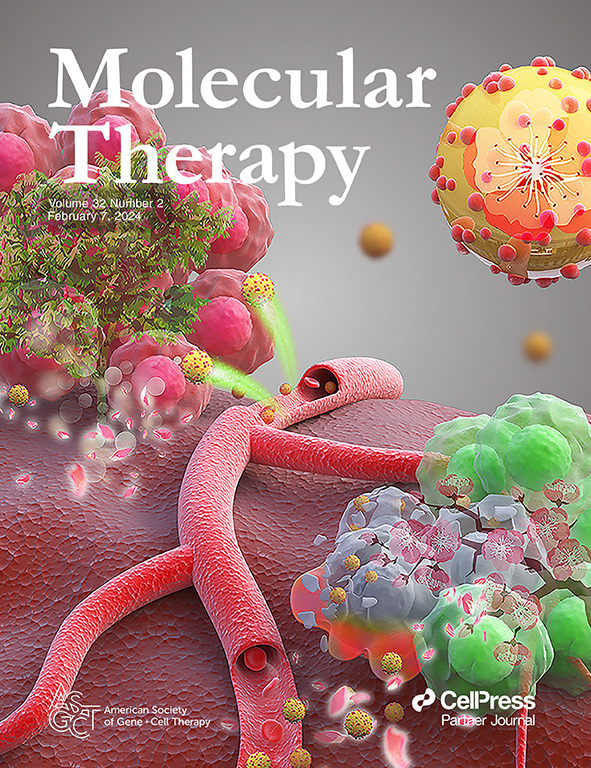Inhibiting Ferroptosis in Type I Hair Cells of the Utricle Might Be a Promising Strategy for Treating Cisplatin-Induced Vestibulotoxicity.
IF 12
1区 医学
Q1 BIOTECHNOLOGY & APPLIED MICROBIOLOGY
引用次数: 0
Abstract
Cisplatin-induced peripheral vestibular toxicity can significantly affect the quality of life of cancer patients undergoing treatment. In this study, we established a model of cisplatin-induced vestibulotoxicity that demonstrated significant vestibular dysfunction, closely mirroring the condition of cancer patients receiving cisplatin treatment. Following cisplatin administration, Type I and Type II vestibular hair cells (vHCs) exhibited progressive loss, with Type I vHCs showing greater susceptibility to the drug. In vestibular tissues treated with cisplatin, evidence was found for the induction of ferroptosis, as indicated by alterations in several key ferroptosis regulator genes and the activation of ferroptosis biomarkers. Furthermore, these phenotypes were ameliorated by the administration of Fer-1. In Atoh1-Gpx4-/- mice vHCs, increases in reactive oxygen species (ROS) and Fe2+, along with reductions in mitochondrial cristae, cell membrane rupture, and cytoplasmic vacuolation, suggest the activation of ferroptosis. Notebly, the phenotypes observed in Atoh1-Gpx4-/- mice closely resembled those induced by cisplatin in the utricle. Our findings also demonstrated that the FDA-approved madecassic acid effectively mitigates vHC loss resulting from Gpx4 ablation and cisplatin administration through the modulation of Acsl3 and Gpx4. In summary, inhibiting ferroptosis may represent a potential strategy to protect against vestibular dysfunction caused by cisplatin-induced vestibulotoxicity.抑制I型毛细胞胞囊铁下垂可能是治疗顺铂诱导的前庭毒性的一个有希望的策略。
顺铂诱导的周围前庭毒性可显著影响接受治疗的癌症患者的生活质量。在本研究中,我们建立了一个顺铂诱导的前庭毒性模型,显示出明显的前庭功能障碍,密切反映了接受顺铂治疗的癌症患者的情况。顺铂给药后,I型和II型前庭毛细胞(vhc)表现出进行性损失,其中I型vhc对药物更敏感。在接受顺铂治疗的前庭组织中,发现了铁下垂诱导的证据,如几个关键的铁下垂调节基因的改变和铁下垂生物标志物的激活。此外,这些表型通过给药fe -1得到改善。在Atoh1-Gpx4-/-小鼠vhc中,活性氧(ROS)和Fe2+的增加,以及线粒体嵴、细胞膜破裂和细胞质空泡化的减少,表明铁下垂的激活。值得注意的是,在Atoh1-Gpx4-/-小鼠中观察到的表型与顺铂在胞内诱导的表型非常相似。我们的研究结果还表明,fda批准的madecassic酸通过调节Acsl3和Gpx4有效减轻Gpx4消融和顺铂给药导致的vHC损失。综上所述,抑制铁下垂可能是一种潜在的策略,可以防止顺铂诱导的前庭毒性引起的前庭功能障碍。
本文章由计算机程序翻译,如有差异,请以英文原文为准。
求助全文
约1分钟内获得全文
求助全文
来源期刊

Molecular Therapy
医学-生物工程与应用微生物
CiteScore
19.20
自引率
3.20%
发文量
357
审稿时长
3 months
期刊介绍:
Molecular Therapy is the leading journal for research in gene transfer, vector development, stem cell manipulation, and therapeutic interventions. It covers a broad spectrum of topics including genetic and acquired disease correction, vaccine development, pre-clinical validation, safety/efficacy studies, and clinical trials. With a focus on advancing genetics, medicine, and biotechnology, Molecular Therapy publishes peer-reviewed research, reviews, and commentaries to showcase the latest advancements in the field. With an impressive impact factor of 12.4 in 2022, it continues to attract top-tier contributions.
 求助内容:
求助内容: 应助结果提醒方式:
应助结果提醒方式:


